Sissinghurst Castle Garden, part 2: White Garden, meadow, and tower views
Has any garden been more admired, copied, and written about than Vita Sackville-West’s White Garden at Sissinghurst? We visited in mid-June, and I was excited to finally step into this glowing space and see it for myself.
Twilight would be better for appreciating the pale effect of the white flowers and silver and green foliage, of course, but at least the English sunlight is gentle. Also, my friend Victoria Summerley had warned me it would be a zoo, and it was.
These pictures don’t convey how very crowded it was, as I waited quite a while to get a clear shot here and there.
I’m just keeping it real, and I’ll add that if you ever have the chance to see the garden before it opens to the public at 11 am, leap at the chance. And probably other seasons are less crowded than summer, if you don’t mind forgoing the roses.
I spotted this woman sitting quietly on a bench and happily taking it all in — a vision of how this garden should be experienced (with the crowds cropped out).
There were lovely hidden spaces to discover, like this long niche between tall yew hedges, with a focal-point urn.
And a secret garden under a beautiful weeping silver pear. Step under the drooping branches…
…and you enter a glade-like room shared only with this lovely statue of a woman.
Doorways cut into the hedge walls lead on to other gardens.
I enjoyed exploring the orchard meadow along its mown pathways, always with a view of the Elizabethan tower.
Roses scramble romantically over a dovecote alongside an architectural relic.
Sissinghurst Castle Garden may not really have a castle, but it does have an old moat that wraps two sides of the garden. A picturesque conical-roofed gazebo overlooks it.
The gazebo was the summer office of Vita’s son Nigel Nicolson, and it still holds his desk and books.
Another doorway from the White Garden leads to a lawn below the tower.
I headed that way, ready to climb up to the roof.
But first a view of the lawn and a hedge-cut doorway leading to the orchard meadow.
On the tower steps, a potted puya attracted attention with its turquoise flowers.
They almost look plastic, don’t they?
A sign gives you the tower’s history as an 18th-century prison for French naval officers during the Seven Years’ War. It was also used as a poorhouse before Vita and her husband bought it. I feel lucky to have been able to enter, as it was closed for restoration over the winter of 2017-18 and only reopened this spring.
Inside the tower, a wooden staircase spirals up past whitewashed brick walls. There were a LOT of other visitors going up and down the steep, narrow stairs, and passing those who were coming down was…tricky. A thick rope attached to the steep inner spiral at least gives you something to hang onto as you pass people.
Vita’s name in tile under one of the windows
Vita was not only a gardener but a prolific writer (and the lover of author Virginia Woolf), and she had a writing room of her own in the tower.
You can view it but not enter as you pass by on the way up. What a wonderful place for a cozy, book-filled study.
Looking out the diamond-paned windows you enjoy a view of the manor house.
And then from the open roof, 66 feet high, you see it again from a bird’s-eye perspective.
From this height you can also see several white-capped oast houses on the farm, used for drying hops for beer.
Looking to the left, you see the walled garden with the pink and purple flowers (see Part 1 of my Sissinghurst visit).
From the other side of the roof you have a view of the rondel, or curved-hedge garden.
Directly behind the tower, the meadow orchard and its mown paths stretch before you.
And turning to the left you can admire the White Garden from above, as well as the bucolic farmland beyond.
After exploring the tower I poked my head in the library of the main house, where hangs a portrait of Vita.
By now it was well past lunchtime, so we headed for the cafe, passing the charming oast houses and a meadow of daisies.
Following the hungry throngs toward an enormous brick Elizabethan barn, we found the cafe next door. There’s also a nice gift shop in an old piggery.
A wide doorway into the barn frames a lovely view of the countryside.
This green and pleasant land
“Vita’s garden draws on the sense of embedded time and on the thousand year old landscape that surrounds it,” reads a handwritten sign in the barn.
We enjoyed sandwiches at a picnic table alongside the barn and, refreshed, headed back to the car.
View from the parking area — that thousand-year-old, human-formed landscape of fields and hedgerows, which makes the perfect rural setting for this remarkable garden.
Coming up next: A visit to Great Dixter garden, part 1. For a look back at Part 1 of my visit to Sissinghurst, click here.
I welcome your comments; please scroll to the end of this post to leave one. If you’re reading this in a subscription email, click here to visit Digging and find the comment box at the end of each post.
_______________________
Digging Deeper: News and Upcoming Events
Join the mailing list for Garden Spark Talks! Inspired by the idea of house concerts, I’m hosting a series of garden talks by inspiring designers and authors out of my home. Talks are limited-attendance events and generally sell out within just a few days, so join the Garden Spark email list for early notifications. Simply click this link and ask to be added.
All material © 2006-2018 by Pam Penick for Digging. Unauthorized reproduction prohibited.


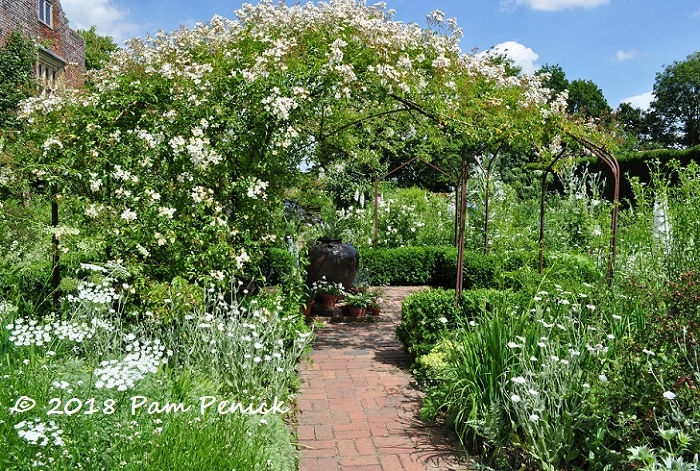
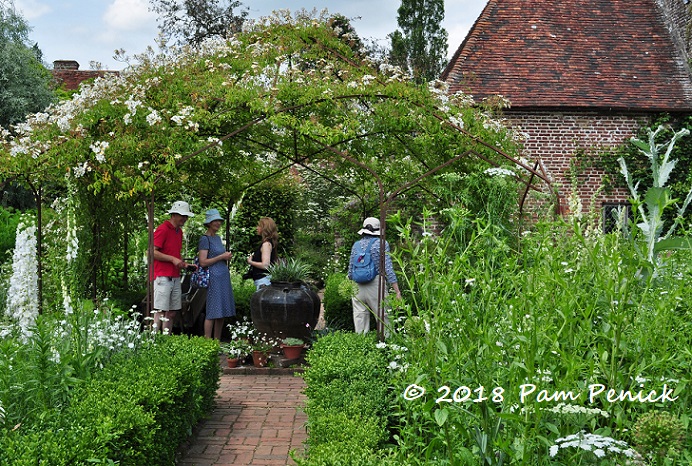
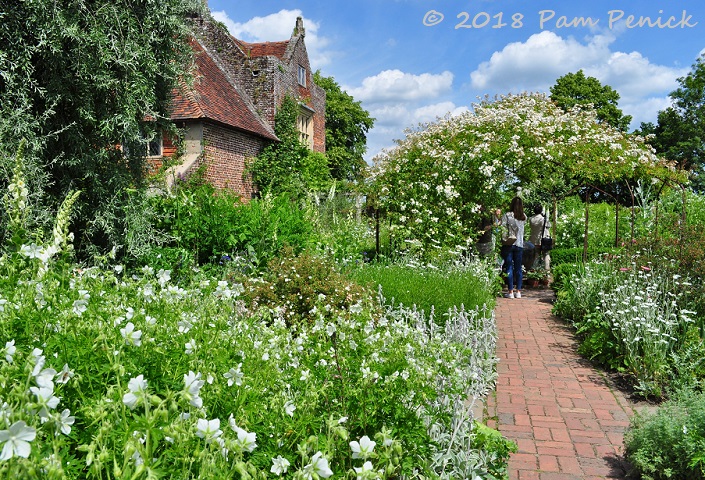
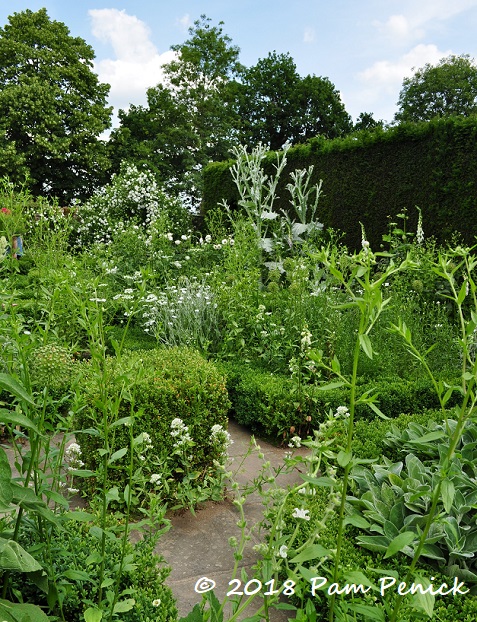
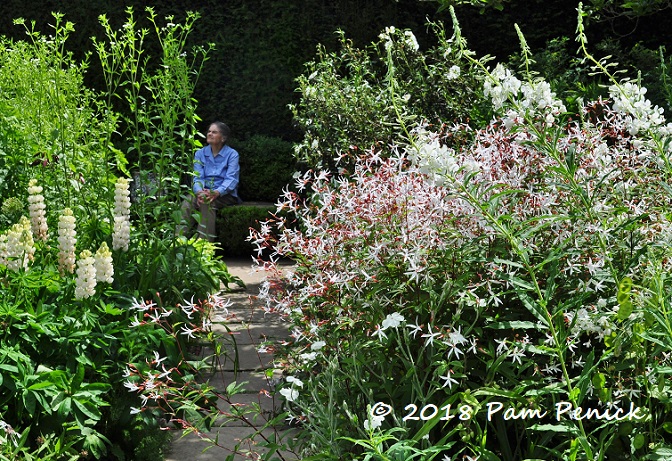
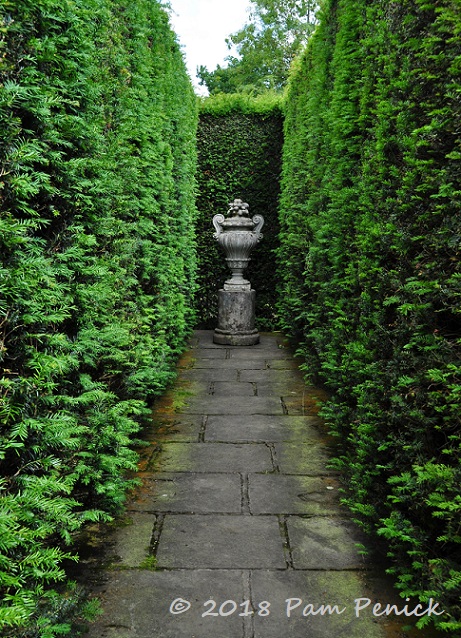
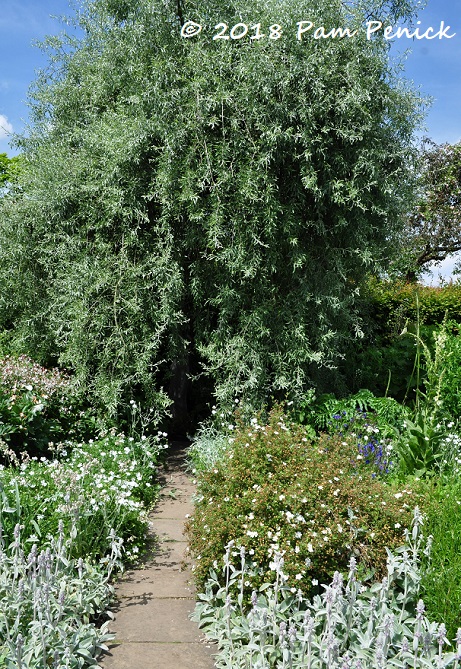
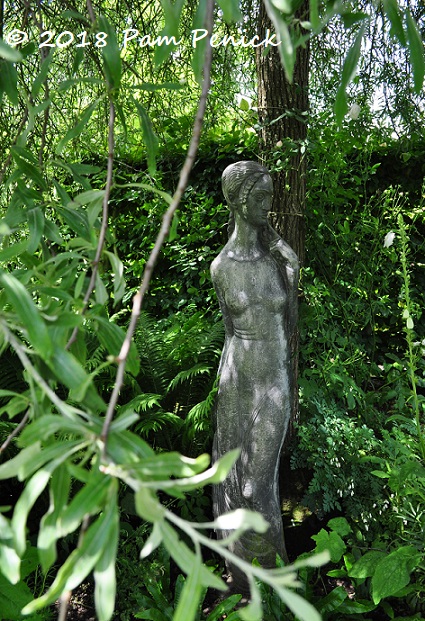
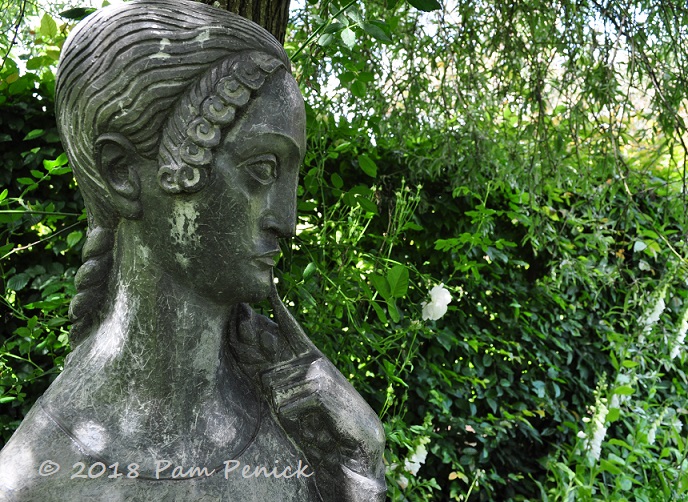
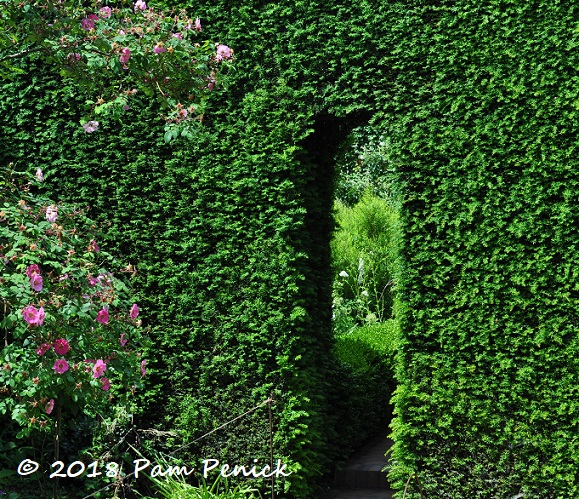
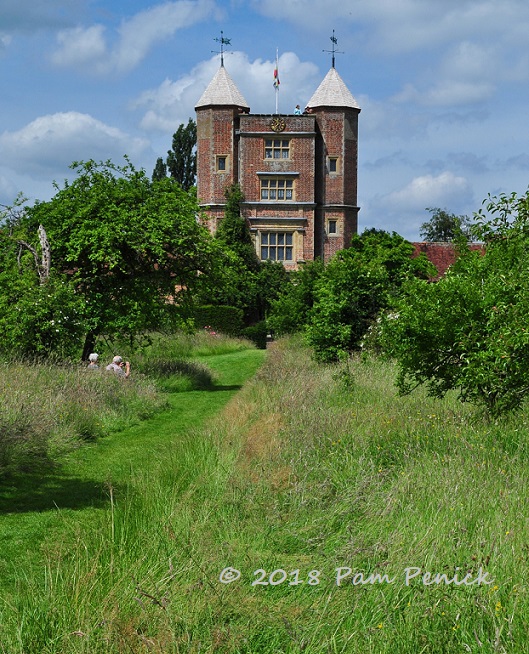
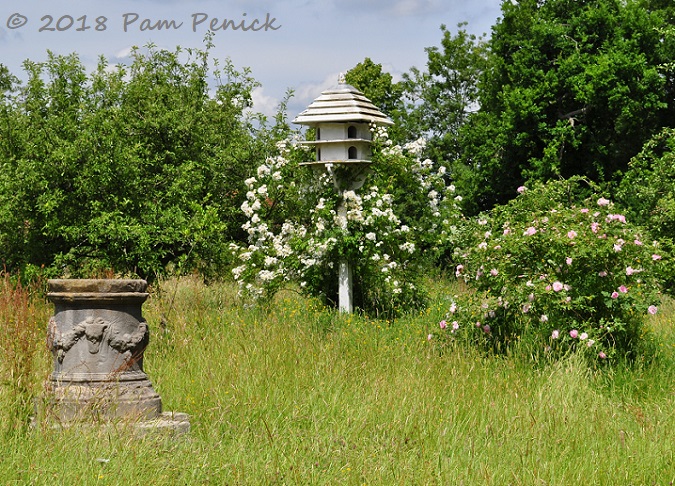
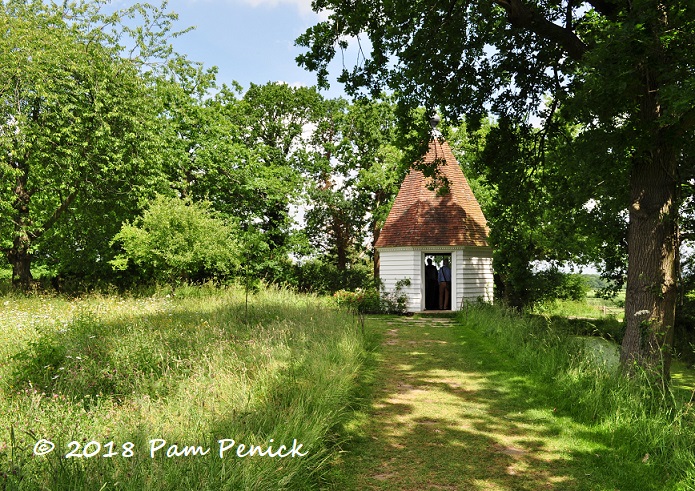
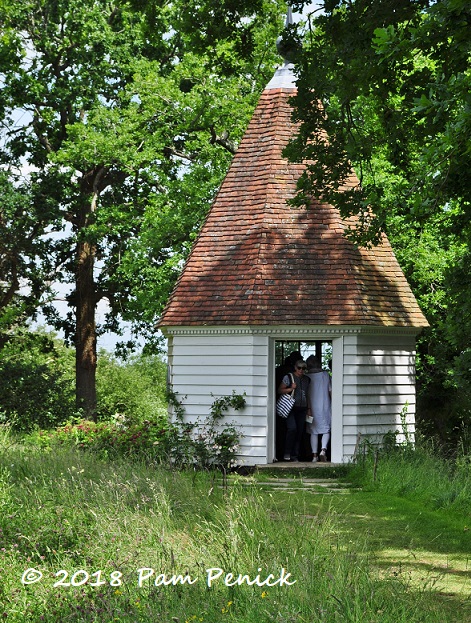
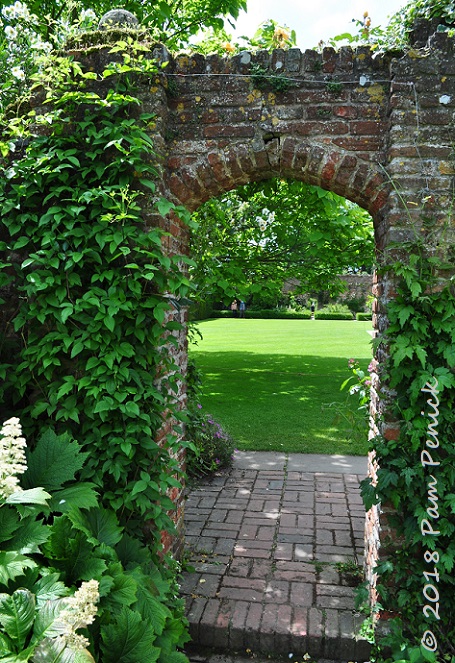
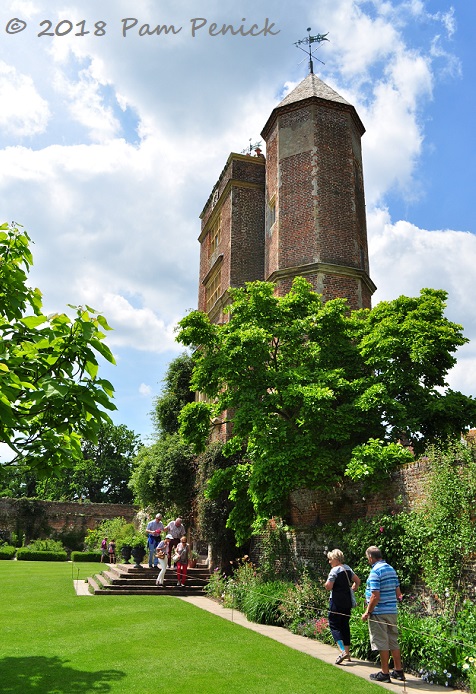
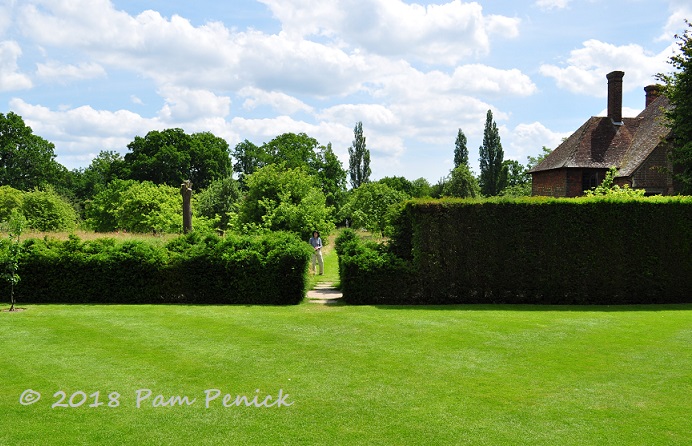
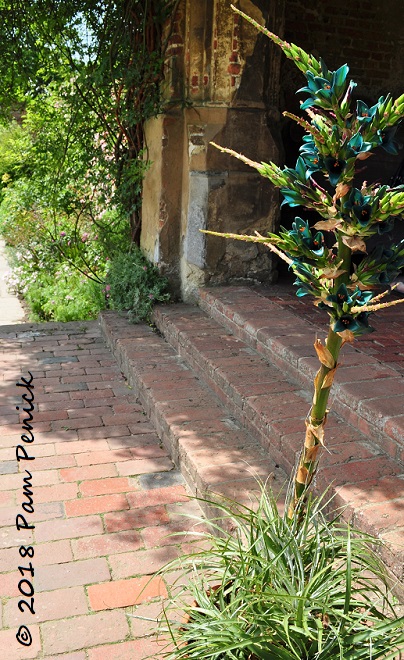
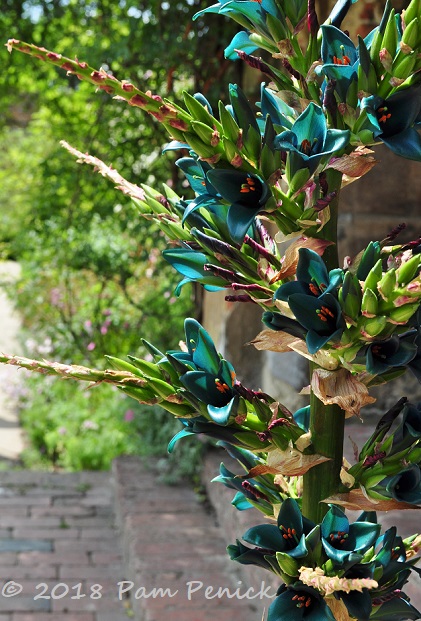
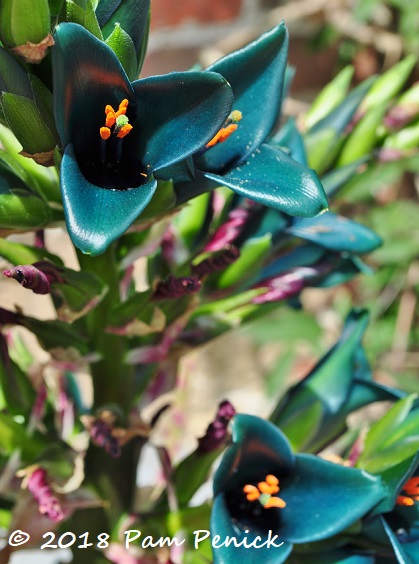
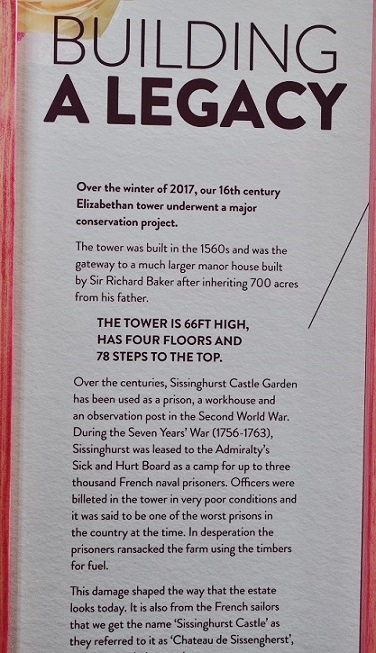
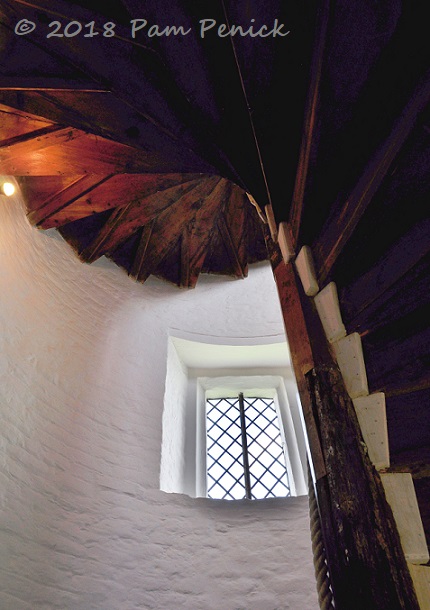
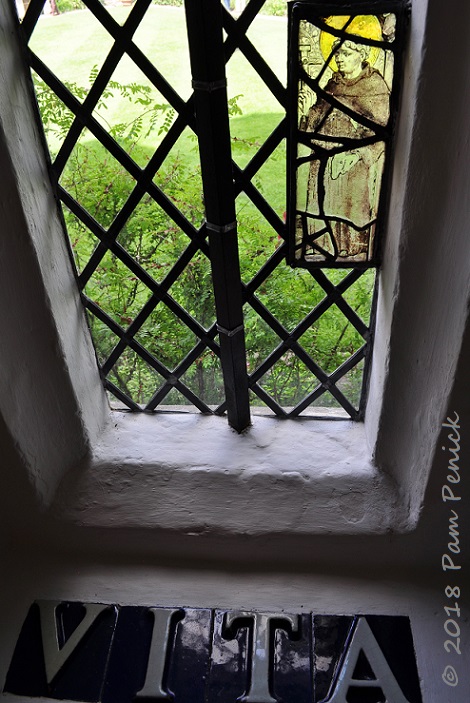
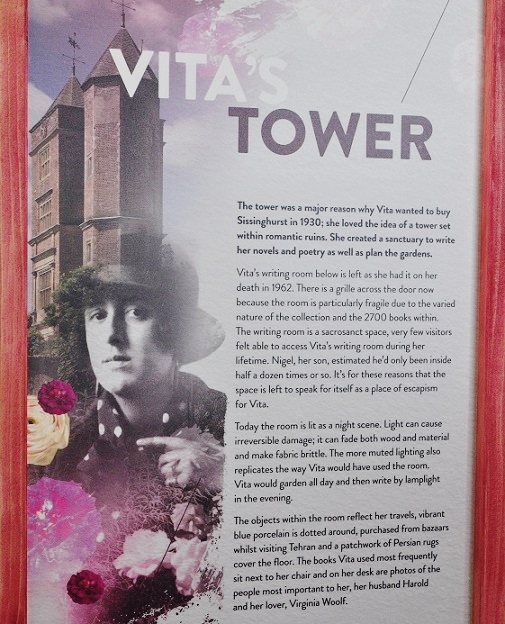
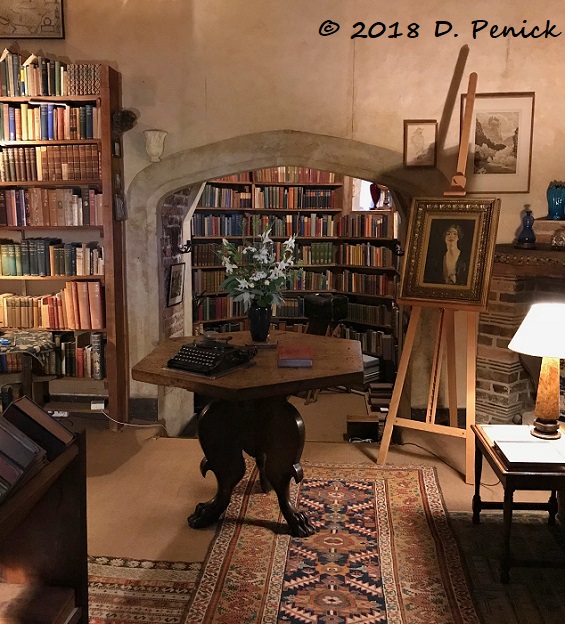
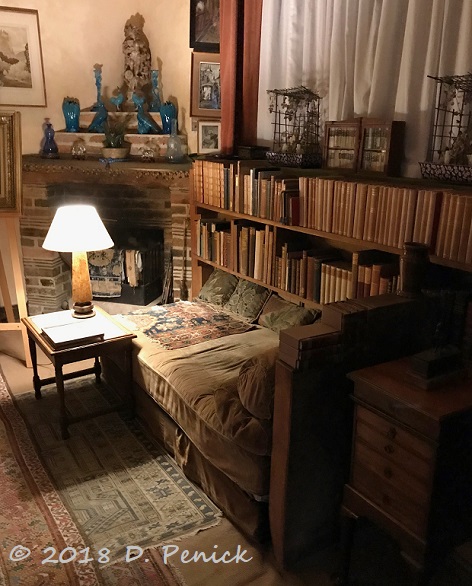
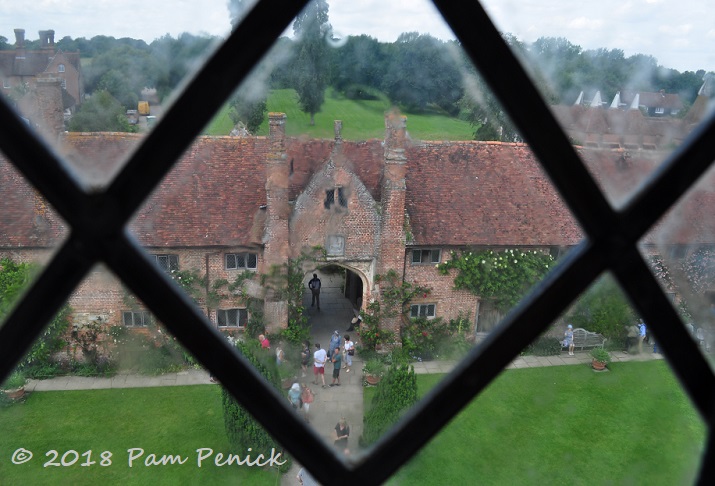
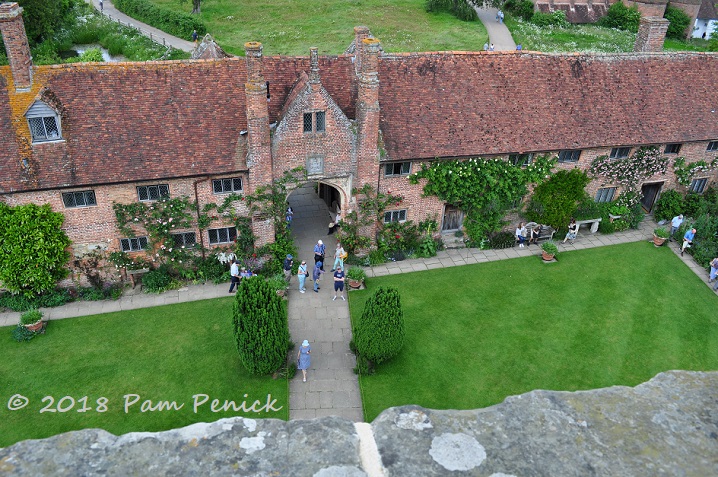
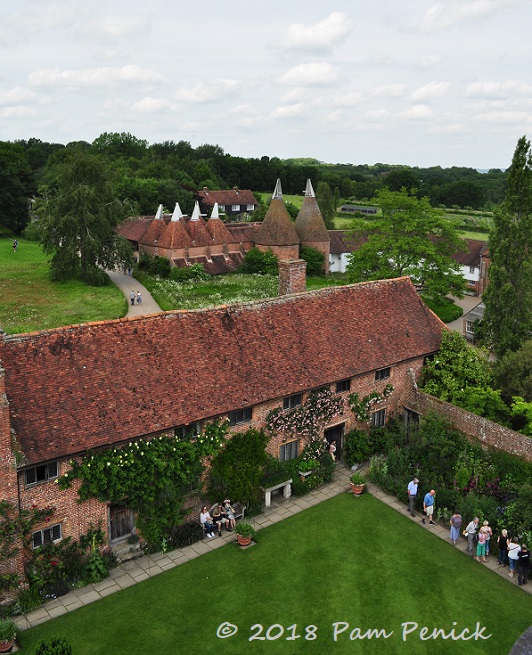
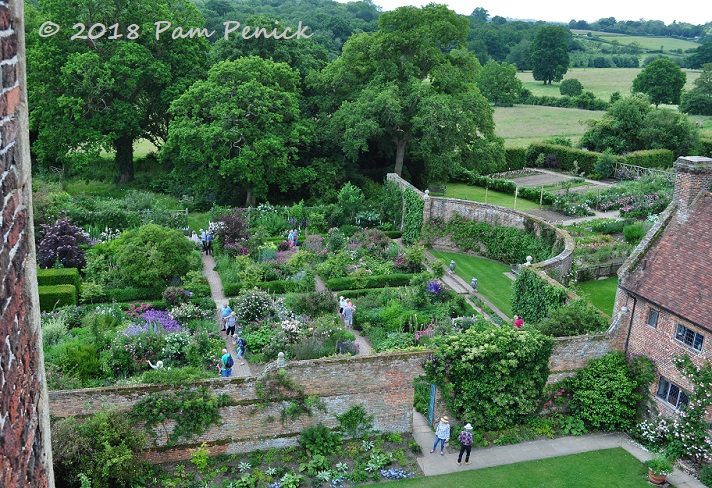
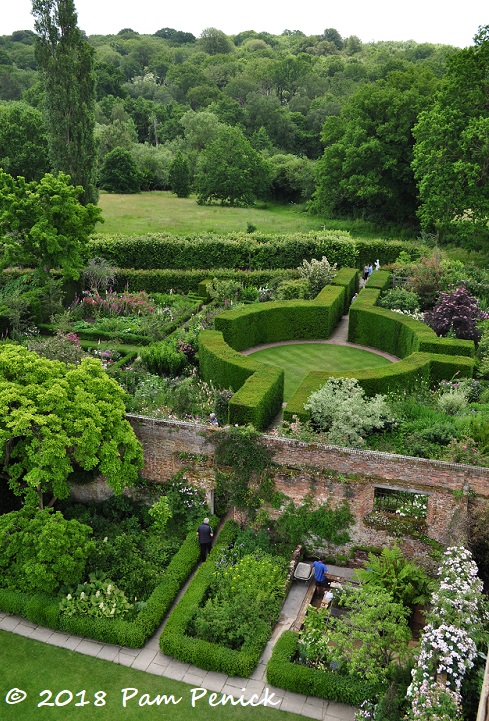
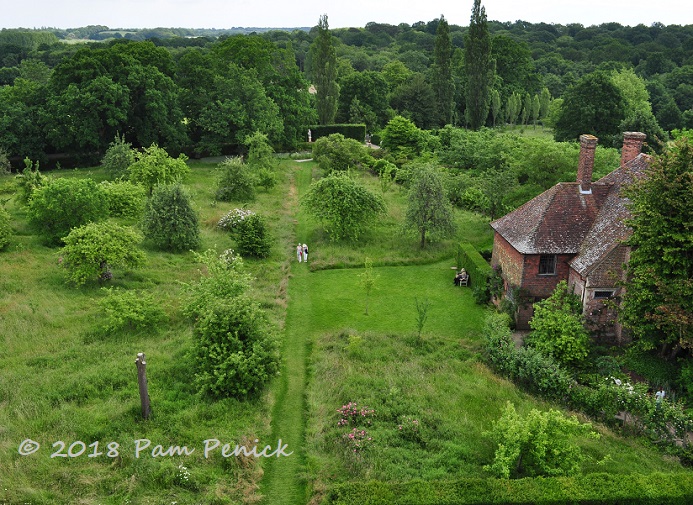
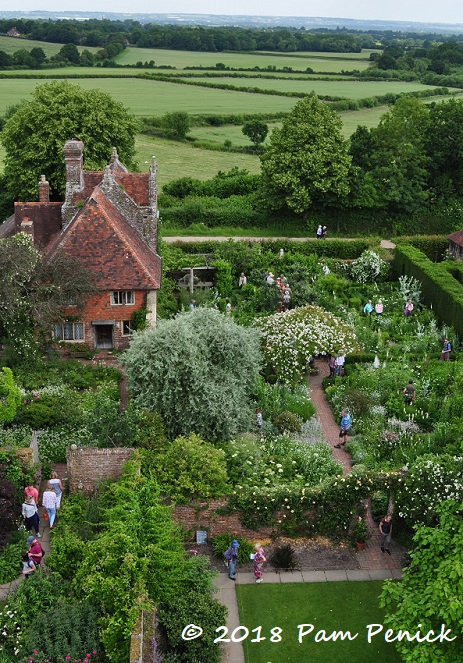
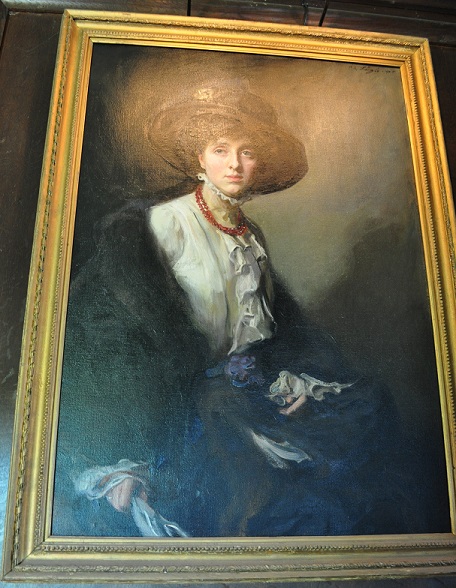
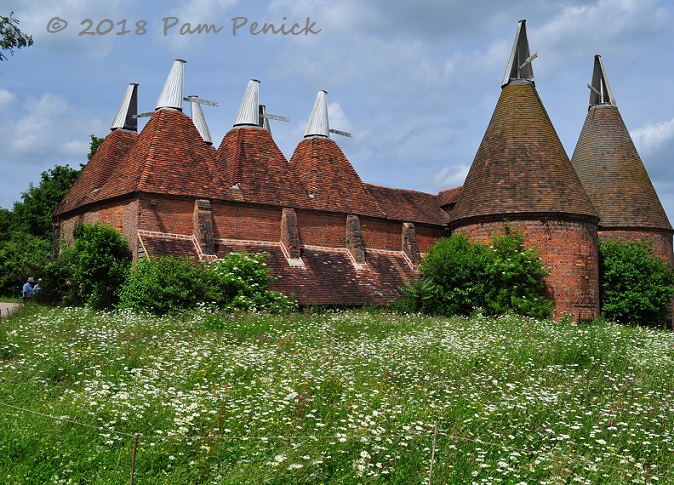
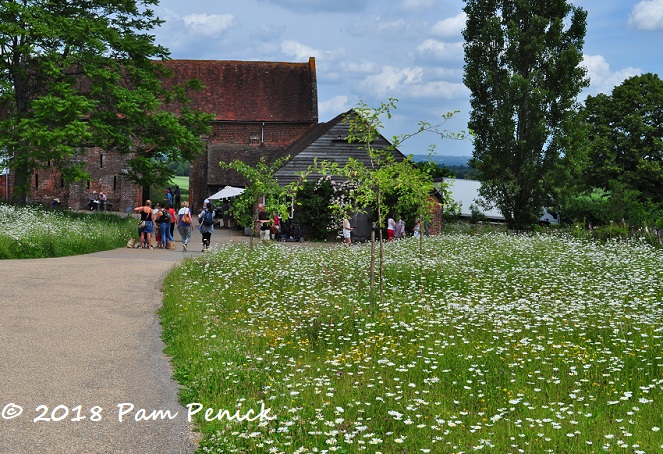
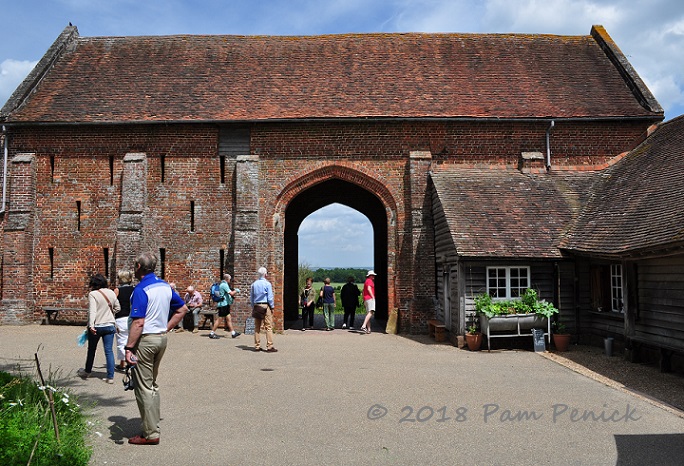
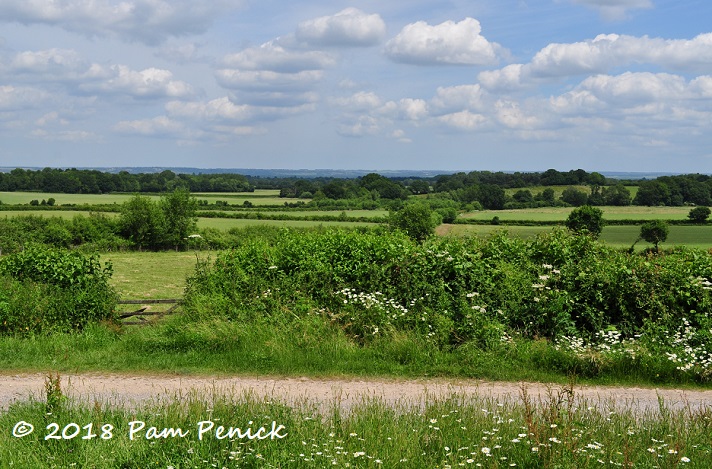
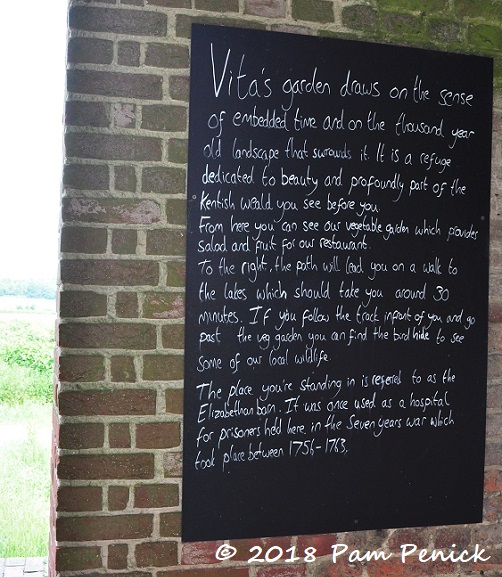

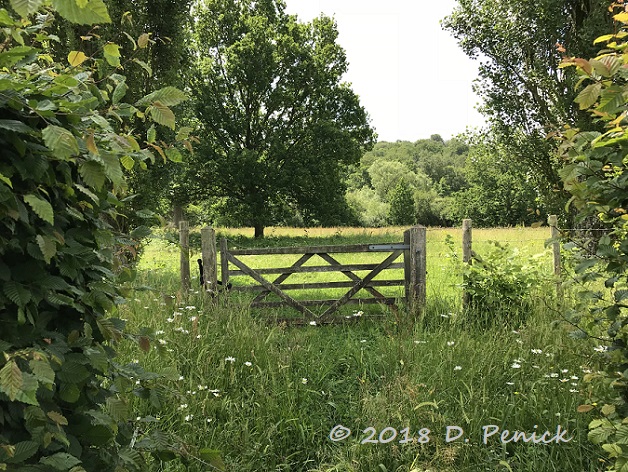
You certainly got to see quite a bit of the gardens and buildings. Wouldn’t you love to have a tower writing room full of all of those books etc. I doubt I would ever leave. A fun tour. Thanks so much for taking us along.
Yes, a tower room would be quite excellent. That and a staff of gardeners!
Great photos once again. The white garden is impressive, although I’m too obsessed with color to ever consider creating one of these myself. I loved the doorway cut in the hedge and the Puya!
I’m not sure that a white garden would look as good in our bright and sunny Western climates. What do you think, Kris? Probably only at twilight. I think color is the way to go here, and that suits me anyway. 🙂
These posts about Sissinghurst are fantastic! I was lucky enough to visit Great Dixter myself in mid-July and it made me really want to see Sissinghurst… since according to my reading about Great Dixter it was a big influence and in a similar style. You pictures and descriptions are just great — thank you for such attention to detail. I’ve started diving in to the rest of your posts about your UK trip… it looks like it was an amazing trip.
Thanks for visiting, Amy! I just read and enjoyed your posts about Great Dixter. I’ll be blogging about that garden soon.
Loved seeing the photos! I’ve so enjoyed visiting Sissinghurst and Great Dixter on both of my two garden visiting trips to England, first in Sept. then in May. I’m ready to return, that’s for sure. I heard the horticulture director at Sissinghurst speak this year at a spring symposium — a fascinating perspective on how a historic garden has evolved and developed.
Thanks for sharing your visit!
I would love to hear the director of either of these gardens one day. I bet the talk was fascinating.
Such a beautiful home with so many gardens! Thank you for your lovely photos…you have captured it well. I imagine you wish you had days to explore.
Yes, at least one day apiece here and at Great Dixter. But that’s the kind of garden visiting I do when I’m traveling with fellow gardeners. My family is very generous, but they have other interests too — ha!
Hi;
Do you by any chance know the name of the bush in the fifth picture, on the right side of the path? The one with star like flowers with pink underside. Spectacular! Thank you.
I’m afraid I don’t, Halina. Maybe another reader will be able to ID it for you. Thanks for visiting!
From the blooms it looks like Bowman’s root, Gillenia trifoliata. It’s native to the eastern U.S. and blooms in late spring. Don’t think I’ve ever seen one quite so lush, but even half that many blooms makes for an effective show.
Thanks, Nell.
I agree with Nell — it’s Gillenia trifoliata.
Thanks for the confirmation, Pat.
Thank you. Wonder how well it’d fare in coastal southern california
Oh I was quite enchanted by this post, almost as if I had gone along. The white garden is truly swoon worthy! But I think my favorite view was of the bucolic countryside. Just as I’ve always pictured England!
Isn’t it? I really wished we’d had more days in order to walk some of the footpaths around the towns and villages. It was all so scenic.
Loved all the pix and commentary you did on Sissinghurst and Great Dixter. The head of Rotary Gardens in Janesville, Wi was an intern at Dixter a few years ago and blogged about it daily. After reading his posts, I think what you witnessed is a philosophical choice not a matter of maintenance. And I think as some commented it is probably much different in spring. But just look at the extravagant display of pots by the doors of the house to see that over-the-top is the attitude there.
Vita was adamant that she would never give Sissinghurst to the National Trust but her son had to for all the usual financial reasons. If you read the book by her grandson, Adam Nicholson, you get a clear sense of what happens to a house and garden when the Trust takes it over. Vita’s own books are the real story of Sissinghurst and were the first things I ever read about gardening. Here is a short review I did of Adam’s book which mentions some of the issues these houses and gardens face: http://www.lindabrazill.com/each_little_world/2012/02/sissinghurst.html
Forgot to mention that in your photo of the woman just sitting and enjoying Sissinghurst in the shade, the blowsy plant in the foreground is Gilenia trifoliata, an American native.
Thanks for all the great info, Linda. Yes, I agree with you about Great Dixter (link here for readers who are curious: https://www.penick.net/digging/?p=48075) that the overblown look is intentional, not merely a maintenance issue. And I’m clearly in the minority in not loving it, which is an odd feeling for me because I’m usually a more-is-more person. At any rate, it made for an interesting thought experiment. 🙂
Fascinating information; stunning photographs. P. x
Thank you!